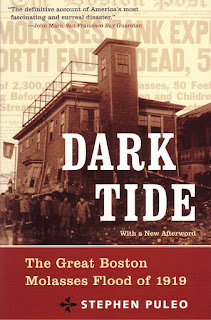Visions from the Past
I was surprised yesterday to see in one of my emails an article published on January 20 in The Atlantic entitled "Why There Are No Nuclear Airplanes." I have some personal history related to the concept of nuclear-powered aircraft, so this brought back some memories.
As it turns out, the concept of a nuclear-powered aircraft has been considered at least twice. This article recounted the first efforts to develop nuclear powered aircraft, starting in the late 1940s and continuing through the 1950s. This was by far the larger effort, and certainly the one that should receive the most attention.
However, there was a second effort in the 1970s that was much more limited and is much less known than the first initiative. The Atlantic article didn't cover the second wave at all. Although the second effort was shorter lived and never got beyond the very early planning stage, I thought it might be worth completing the picture by describing that effort.
But first, to recap the original program. As The Atlantic article indicates, the 1950s concept for a nuclear-powered aircraft focused on supersonic aircraft that could stay aloft for long periods and wouldn't need refueling. The payload capacities of the aircraft at that time, however, posed a number of limitations. On the plus side, they led to the early R&D efforts on molten salt reactors, which had the ability to achieve a high power density. However, even with the high power density, the plane could not carry the additional weight of a fully shielded reactor. Therefore, the concept involved an unshielded reactor, and the pilots would have been subjected to high levels of radiation exposure.
The program was ultimately cancelled in the early 1960s. By that time, the development of ballistic missiles, mid-air refueling, and longer range jet-fueled bombers largely filled the niche that nuclear-powered bombers would have filled.
Fast forward another decade or so. With my freshly minted doctorate in nuclear engineering, I ended up working for Analytic Services Inc. (ANSER), a company that worked mainly for the Air Force. When I was hired, I was told that I'd work on a variety of issues, but I would be the source of expertise within the company whenever a nuclear-oriented project came up. Although that sounded intriguing, I wondered at the time if I'd ever see such a project.
I didn't have long to wait. Shortly after I arrived there, ANSER was asked by the Air Force to do a study on a concept for a nuclear-powered aircraft. This concept was much different than the earlier effort. The need now was considered to be for an aircraft that could stay aloft for long periods of time for purposes such as command and control. Thus, it would only need to operate at subsonic speeds. It would also take advantage of the latest in both aircraft and nuclear reactor technology. And the concept I was to analyze definitely called for the reactor to be shielded.
Well, that analysis showed that even with the larger aircraft that would be used, the weight of a shielded reactor would leave no allowance for any payload. That alone doomed the concept in this second round. (And there was no longer any consideration of exposing flight crews to an unshielded reactor.) In addition, this was the period where public concerns about the safety of nuclear power plants were beginning to emerge, and the anticipated public resistance to the idea of flying reactors over the country also dampened the enthusiasm for this project.
So this time, the effort was limited to a paper study and to briefings and discussions with representatives from key Air Force and other organizations that would be likely to participate in such a project if it were to move forward. No funding was ever allocated, and no R&D was ever initiated. Thus, it is only a footnote in history. Nevertheless, it is of interest to those who follow the history of nuclear power, and it is a reminder of how some concepts can be revived in different guises as technology develops and needs evolve.
At the time I did this work, much of it was classified, but when I tried to see if anything was now publicly available, I came across this very comprehensive study, which I can recommend to anyone who wishes to learn more about the brief renewed attempt to develop a nuclear-powered aircraft.
***





